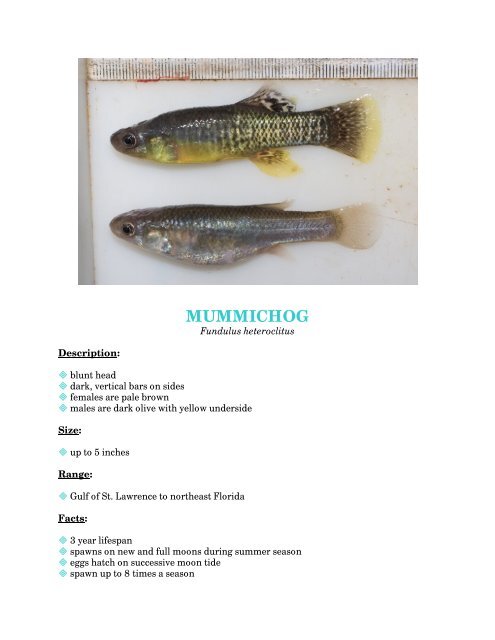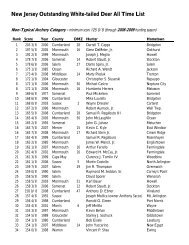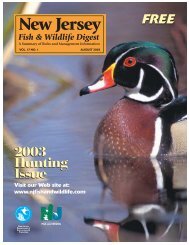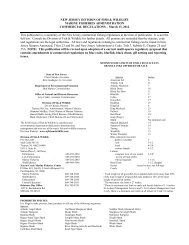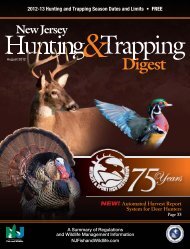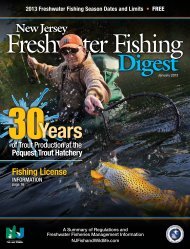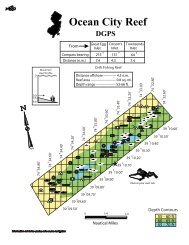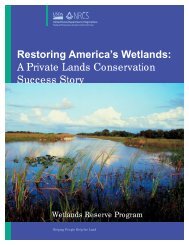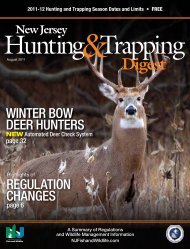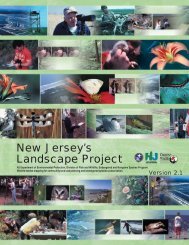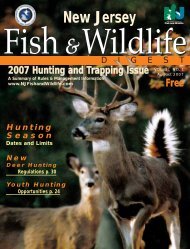MUMMICHOG - Division of Fish and Wildlife
MUMMICHOG - Division of Fish and Wildlife
MUMMICHOG - Division of Fish and Wildlife
Create successful ePaper yourself
Turn your PDF publications into a flip-book with our unique Google optimized e-Paper software.
<strong>MUMMICHOG</strong><br />
Fundulus heteroclitus<br />
Description:<br />
blunt head<br />
dark, vertical bars on sides<br />
females are pale brown<br />
males are dark olive with yellow underside<br />
Size:<br />
up to 5 inches<br />
Range:<br />
Gulf <strong>of</strong> St. Lawrence to northeast Florida<br />
Facts:<br />
3 year lifespan<br />
spawns on new <strong>and</strong> full moons during summer season<br />
eggs hatch on successive moon tide<br />
spawn up to 8 times a season
eggs are laid on s<strong>and</strong>, leaves <strong>and</strong> empty shells<br />
inhabit salt marshes, tidal creeks <strong>and</strong> estuaries<br />
feed on insects, small fish, crustaceans <strong>and</strong> plant material<br />
used as a natural method <strong>of</strong> mosquito control in ditches <strong>and</strong> marsh ponds, since they<br />
can eat up to 2000 mosquito larvae a day<br />
in 1973, the mummichog became the first fish in space, aboard Skylab 3<br />
*from 1980 to 1986, the largest catch was 98 fish in 1982<br />
NJ Department <strong>of</strong> Environmental Protection<br />
<strong>Division</strong> <strong>of</strong> <strong>Fish</strong> <strong>and</strong> <strong>Wildlife</strong><br />
Bureau <strong>of</strong> Marine <strong>Fish</strong>eries<br />
www.NJ<strong>Fish</strong><strong>and</strong><strong>Wildlife</strong>.com


